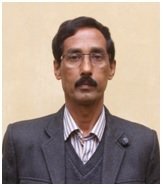Profile
Education:
- Bachelor’s Degree: B.Sc. Botany (Hons.)
- Master’s Degree: M.Sc. Life Sciences (DU)
- Ph.D.: Dibrugarh University
Professional Experience:
- Assistant Professor: Department of Life Sciences, Dibrugarh University, Assam, from 1989 (May)- 1996 (December)
- Associate Professor: Department of Life Sciences, Dibrugarh University, Assam, from 1997 (January)- 2012 (January)
- Professor: Department of Life Sciences, Dibrugarh University, Assam, from 2012 (February)- till date
Areas of Interest/ Specialization:
- Plant Ecology, Chemical Diversity of Medicinal Plants
Ph.D Scholars:
|
Sl. No. |
Name |
Topic |
Status (On-going /Completed) |
|
1 |
Dr. Mitali Boruah |
Autecology of L. parviflora . |
Completed |
|
2 |
Dr. Nabajyoti Das |
Ecology of Tea garden weeds |
Completed |
|
3 |
Dr. Dipali Borpujari |
Soil regeneration in coal mine spoil |
Completed |
|
4 |
Dr. Sristisri Upadhyaya |
Agrotechnology of medicinal plants |
Completed |
|
5 |
Dr. Mridul Gogoi |
Vegetation and Soil of Dibrugarh University |
Completed |
|
6 |
Dr. Mousomi Madhab |
Microbial Ecology of Tea soil |
Completed |
|
7 |
Dr. Binita Boruah |
Water lilies of Upper Assam |
Completed |
|
8 |
Dr. Munmi Borkataky |
Pharmacology of medicinal plants |
Completed |
|
9 |
Dr. Junali Chetia |
Phytochemistry of medicinal plants |
Completed |
|
10 |
Dr. Kalyan Das |
Phytochemistry of Curcuma spp. |
Completed |
|
11 |
Dr. Anuradha Gogoi |
Water health of Dikhow river |
Completed |
|
12 |
Dr. Parismita Borgohain |
Onychomycosis and its risk factors among agricultural workers of upper Assam: case control study |
Completed |
|
13 |
Dr. Pretty Ekka |
Bio-efficacy of tea soil fungi from Upper Assam against tea mosquito bug Helopeltis theivora Waterhouse (Hemiptera: Miridae) and development of an effective formulation |
Completed |
|
13 |
Borsha Tamuli |
Host-microbe interaction in medicinal plants |
On-going |
|
14 |
Dr. Dipika Rajput |
Diversity of ethnomedicinally important Dendrobium spp. of upper Assam |
Completed |
|
15. |
Hrituporna Saikia |
Effect of Phosphate solubilizing bacteria on growth, nutrient uptake and yield of Lablab purpureus |
On-going |
|
16. |
Toslima Nasrin |
Studies on the antihyperglycemic activity of Tinospora sinensis |
On-going |
Administrative Assignments:
- Head of the Department (July 2009- June 2012)
- Zonal Officer in University Examinations
Extension Service:
- Community service in relation to wild fire, spider atrocities, etc.


